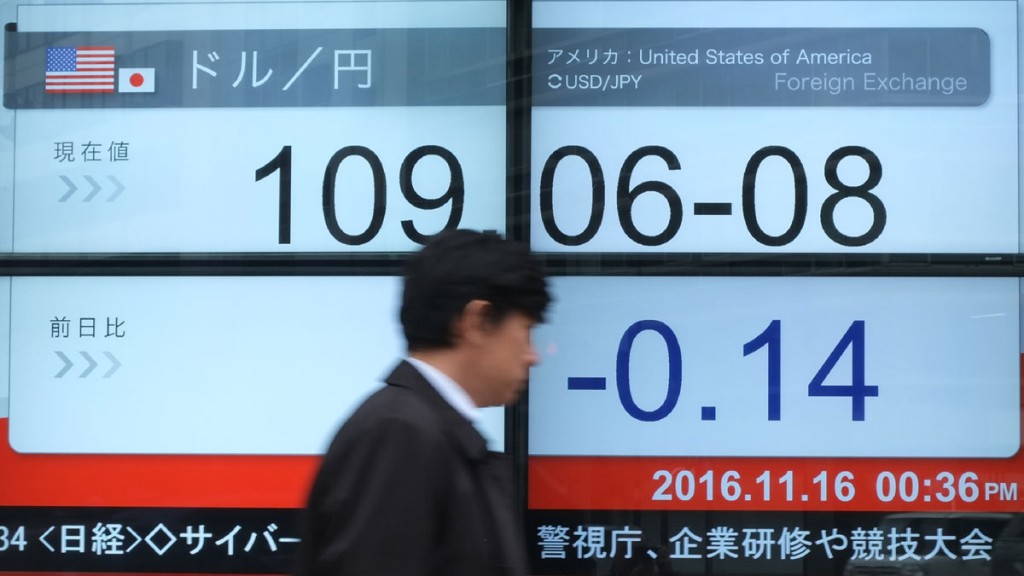
We’ve spent most of this week focusing on the Autumn Statement.
As it turned out, Philip Hammond’s first proper outing into the public eye was a bit of a non-event. It was a “holding pattern” budget.
Hammond signalled that he’d go a bit easier on the austerity, and that he’d ideally like to be less hyperactive than his most recent predecessors (with the honourable exception of Alistair Darling).
But as I said yesterday, it’s not such a bad thing that the chancellor kept the fireworks dry.
The rest of the world is going to provide plenty of fireworks over the next six months – and that’s what investors should be paying attention to…
It’s time to move on
In the last few months, it’s been hard for UK investors to escape from Brexit or more recently, the Autumn Statement.
But if you haven’t already, it’s time to look up from the daily papers and start taking a wider view.
Brexit is important, but it’s very much an ongoing process. There will continue to be plenty of headlines about it, because various publications are heavily emotionally invested in one side or the other.
Every time a foreign trade minister mentions Britain’s particular place in “the queue”, for example, you can expect a back and forth of “I told you so” articles, each putting a different spin on the news.
But for investors at this point, I think Brexit has to slip down the priority list. The pound will suffer the odd up and down based on the progress of talks.
But it’s worth noting that sterling has held its own against the dollar since Donald Trump’s election – quite significant at a time when the dollar has been rocketing against pretty much every other global currency. That suggests the pound has found at least a significant low.
So what do we really need to be worrying about now?
Well, let’s start with that strong dollar.
The US dollar exchange rate is still the most important price in the world
Markets are what can only be described as “remarkably calm” about the strength of the US dollar.
The DXY index – which measures the dollar against the other big developed market currencies (primarily the euro) – is at or near to its highest level since 2003.
But if you look at a wider index (monitored by the US Federal Reserve) that has a heavier weighting towards emerging market currencies, it’s close to a record high.
As I’ve mentioned many times before, a strong US dollar tightens monetary policy around the world. Anyone with dollar-denominated debt – lots of emerging markets, in other words – sees their costs rocket. (It’s a bit like having a euro mortgage for a holiday home in Spain, and waking up the day after Brexit to a much bigger bill).
There are many factors behind this (including the US’s burgeoning energy independence, which means it exports fewer dollars to the rest of the world).
But the point is, right now, it’s hard to see what puts a stop to the rising dollar. The euro is very weak against the US currency right now – at just $1.05, it’s heading rapidly for parity. And yet, with further referendum and election chaos set to dominate the next few months, it’s hard to see it making a brisk recovery.
Meanwhile, the Japanese won’t exactly be crying into their sake over what’s happening to the yen. At the start of the year, Bank of Japan boss Haruhiko Kuroda was facing the failure of his reflation efforts. Now they look to be back on track, thanks to the post-Trump reaction.
There are a few things that could put a stop to the US dollar bull market, and I’ll be looking at them – in the spirit of true contrarianism – later today in our MoneyWeek Unlimited email (this only goes out to MoneyWeek magazine subscribers – sign up here if you haven’t already).
But for now I think it’s sensible to be prepared for some market upheaval. You see, the Federal Reserve now looks committed to raising US interest rates next month. Unless the market has a nasty crash before then – and that doesn’t yet seem to be on the cards – I think the Fed will go through with it.
At the same time, the European Central Bank (ECB) will be keen to keep its own markets propped up. The best way to do that is through maintaining its quantitative easing (QE) programme.
At some point, the markets will wake up and panic about the dollar’s might. But we might have to get through the December “Santa Claus” rally before reality hits home.
For now, I’d be tempted to dust off and update your watchlist ¬– I reckon a decent buying opportunity will be coming up in the next few months, one way or another.
Meanwhile, one upside from a strong US dollar is that it has given the Japanese stock market a kick in the backside, as the yen slides fast. Our regular Asia contributor, Rupert Foster, writes in more detail about Japan, and the best ways to take advantage of its latest surge, in this week’s issue of MoneyWeek, out today.